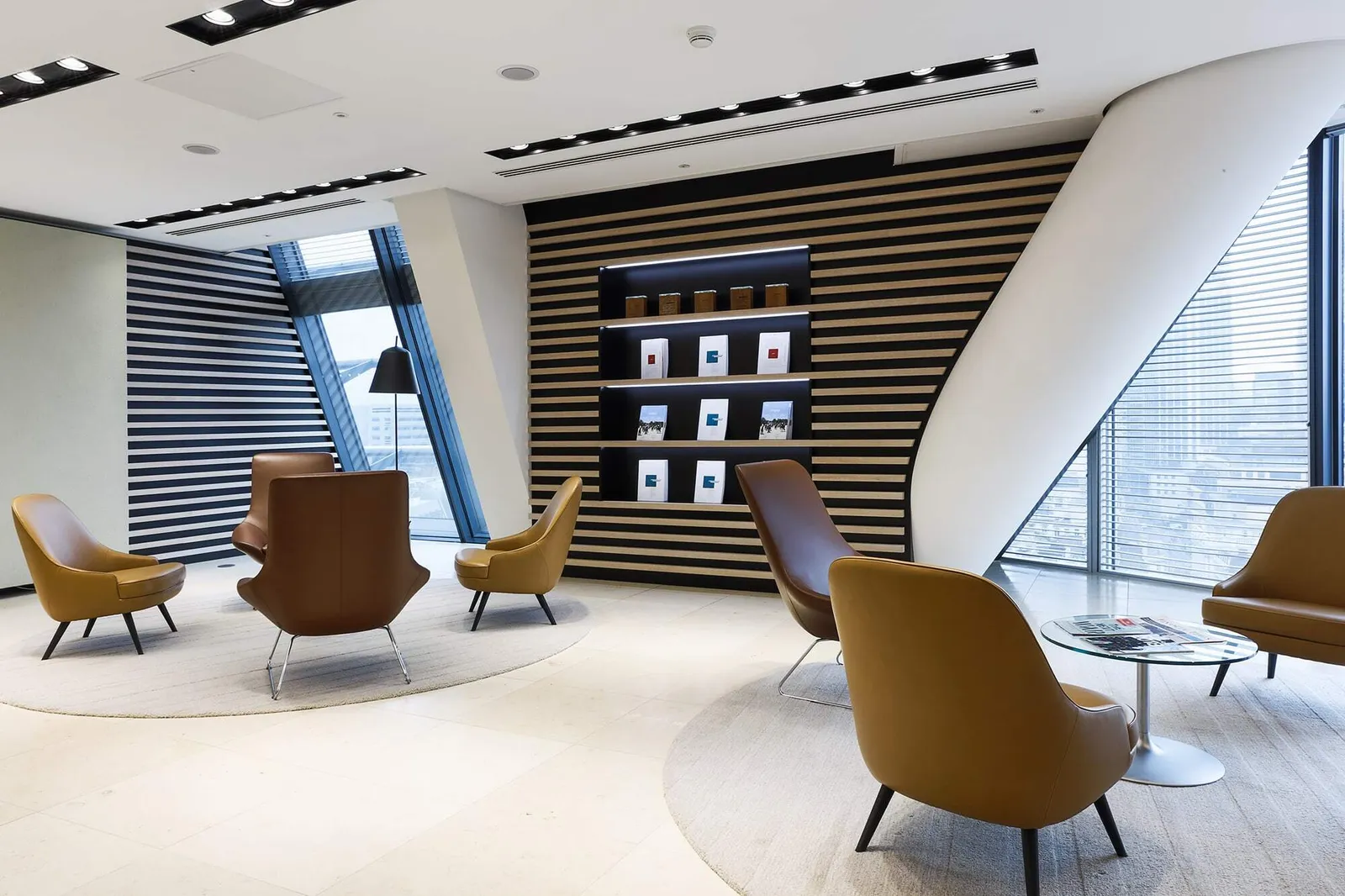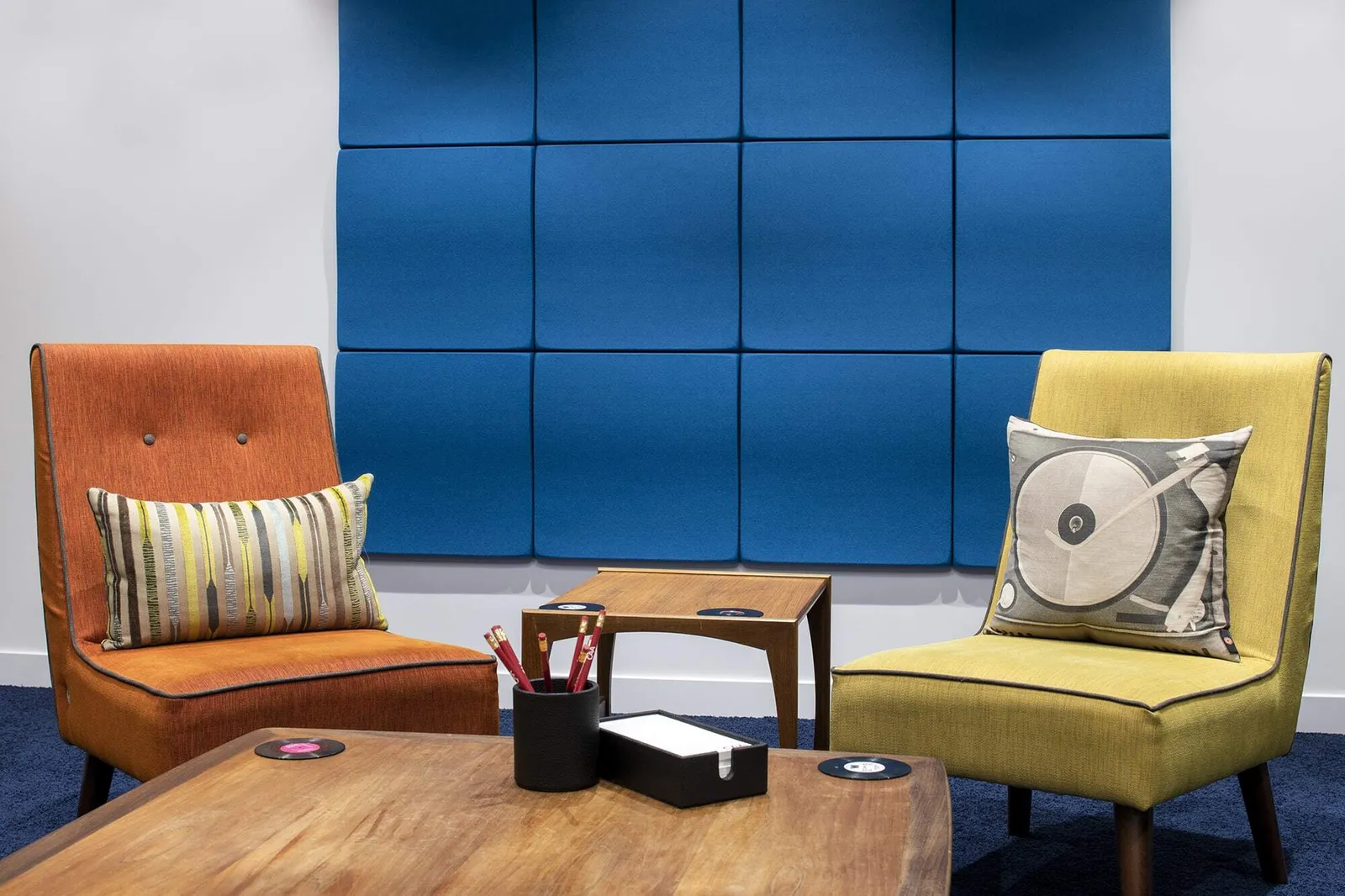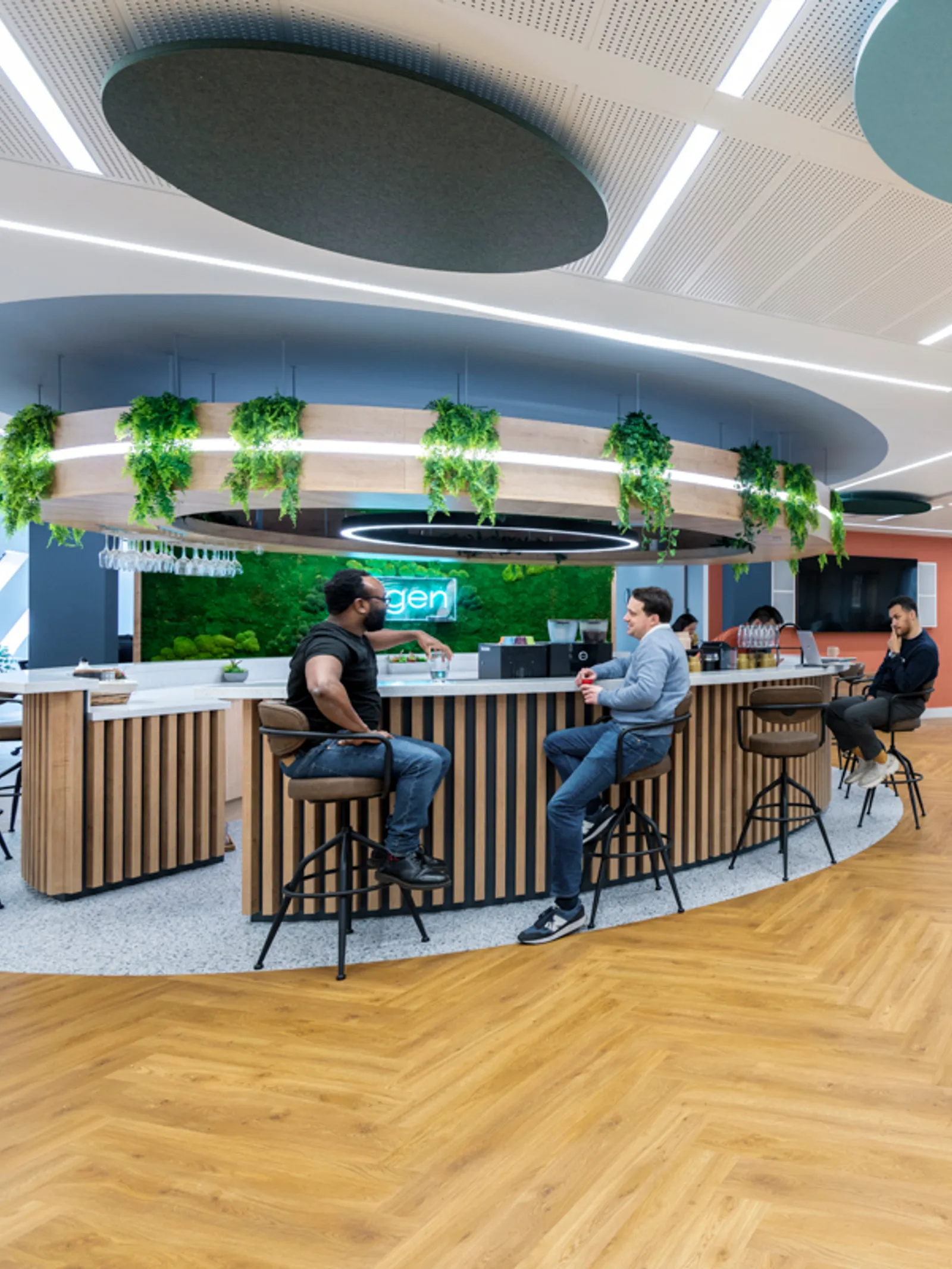Do you understand the differences between design and build vs traditional procurement when it comes to the workplace? This article explains it all.
When it comes to office redesign, choosing the right procurement method is crucial for ensuring that your project meets your needs in terms of budget, timeline, and quality. Two of the most common approaches are Traditional Procurement and Design and Build.
Each method has its own set of advantages and challenges, and understanding these can help you make an informed decision. In this blog, we’ll delve into the differences between design and build vs traditional procurement methods and how they impact the office redesign process.
What Is Traditional Procurement?
Traditional Procurement, also known as the Design-Bid-Build method, is a time-tested approach to project delivery. Here’s a detailed look at how it works:
- Project Design: In Traditional Procurement, the process begins with the client hiring an architect or design firm to create detailed design plans for the office space. This includes everything from layout and aesthetics to materials and finishes. For more on this phase, you can refer to the RICS Guide to Project Management.
- Tendering: Once the design is finalised, the project is put out to tender. Contractors submit bids based on the detailed designs, and the client selects a contractor based on factors such as cost, experience, and reputation. For insights into the tendering process, check out NBS Tendering Guide.
- Construction: After the contractor is selected, the construction phase begins. The contractor is responsible for building according to the design plans provided by the architect. During this phase, the architect may oversee the work to ensure it aligns with the design. You can learn more about construction contracts here.
- Completion: Once construction is completed, the project is handed over to the client. Any issues or modifications required post-construction are typically addressed at this stage. For construction best practices, refer to the City of London Code of Practice for Deconstruction and Construction Sites.
Benefits of Traditional Procurement
- Clear Design Intentions: The design is fully developed before construction begins, which allows for a clear vision and detailed planning.
- Competitive Bidding: Tendering the project can result in competitive pricing, potentially lowering costs.
- Specialised Design: Engaging a design firm and construction contractor separately allows each to focus on their area of expertise. For project owners that have higher budgets and are under fewer time constraints, the level of control that the traditional procurement process offers can be attractive.
- More Suited to Complex Projects: A traditional procurement route is ideal for more complex design projects where each phase, from design to construction, requires distinct, thorough planning and specialist input. This method ensures that detailed design specifications are fully developed before engaging contractors, allowing for better control over quality, precise budgeting, and reduced risk of scope changes during construction.
Some examples where projects might require a traditional procurement process:
- High-rise Buildings: Complex skyscrapers and multi-story commercial or residential buildings require detailed design specifications and strict quality control, making traditional procurement ideal.
- Hospitals and healthcare facilities: These projects involve intricate requirements, including specialised equipment and strict regulations, necessitating careful design and detailed planning before construction begins.
- Heritage building restorations: Restoration of historic buildings requires specialised craftsmanship and strict adherence to conservation principles, making it essential to finalise the design upfront.
- Universities and research centres: These projects involve complex infrastructure, advanced technology requirements, and unique designs that demand clear coordination between architects and contractors.
- Cultural and civic buildings: Museums, libraries, and concert halls often have unique architectural requirements and custom designs, benefiting from the traditional procurement route to ensure all details are meticulously planned.

What Is Design and Build?
Design and Build is an alternative procurement method where one entity, known as the Design and Build contractor, handles both the design and construction phases of the project. Here’s how this approach works:
- Single Point of Responsibility: The client engages a single Design and Build contractor who is responsible for both designing and building the office space. This contractor either has an in-house design team or works closely with external designers.
- Integrated Design and Construction: The design and construction phases are often more integrated and concurrent. The Design and Build contractor collaborates closely with the client to ensure that design decisions are informed by construction feasibility and vice versa. For details on integrated project delivery, refer to The Construction Industry Institute (CII) Integrated Project Delivery Guide.
- Project Execution: The Design and Build contractor manages the entire project, including procurement of materials and hiring of subcontractors. This streamlines the process and can lead to faster project delivery. This streamlines the process and can lead to faster project delivery. For an overview of project management in Design and Build, see Project Management Institute’s (PMI) Guide.
- Completion: The contractor delivers the completed office space to the client. Any issues or changes are handled within the scope of the Design and Build contract. The Chartered Institute of Building (CIOB) Construction Contracts provides insights into managing contracts and handling issues.
Benefits of Design and Build
- Faster Delivery: The integrated approach can significantly reduce project timelines as design and construction can overlap with some stages running simultaneously.
- Cost Efficiency: With a single point of responsibility, there is often greater potential for cost savings and reduced risk of budget overruns. This makes this method highly attractive to those whose priority is keeping costs under control.
- Enhanced Collaboration: The close collaboration between design and construction teams can lead to more innovative solutions and a smoother execution of the project.
- Simplified Communication: Having one contractor manage all aspects of the project simplifies communication and can reduce the likelihood of disputes.
Some examples of where projects would benefit from design and build include:
- Commercial office buildings: Developers often prefer design and build for office spaces because it speeds up the process, allowing for faster delivery while keeping costs predictable.
- Retail developments and shopping malls: Retail projects typically follow a standard design template, making it easier to streamline the process by having a single contractor manage both design and construction for efficiency.
- Housing developments: Large-scale residential projects like housing estates or apartment complexes often use design and build to speed up delivery and control costs, particularly when standardised designs are used.
- Infrastructure projects (roads, bridges, rail): For large infrastructure projects with strict deadlines, design and build can accelerate timelines, allowing construction to begin while design is still being refined.
- Warehouses and industrial facilities: These projects often have straightforward design requirements, and design and build helps achieve cost-effective, quick construction by involving the contractor early to optimise both the design and construction process.
- Data centres and logistics hubs: With technology and utility requirements that evolve rapidly, design and build can help such projects move quickly while still ensuring technical specifications are met.

Design and Build Vs Traditional Procurement - What are the differences?
When comparing Design and Build with Traditional Procurement, key differences arise in cost, control, time, risk, and communication.
In Traditional Procurement, construction costs are initially unknown, with cost certainty achieved later in the project. In contrast, Design and Build offers fixed construction costs from the outset. In terms of control, white Traditional Procurement may give the owner greater oversight over both the design and construction phases, Design and Build requires less owner expertise, as much of the responsibility is handed over to a single contractor.
Timeframes also differ. Traditional Procurement follows a sequential process for design and construction, often leading to longer project schedules. Design and Build, however, allows construction to overlap with the design phase, resulting in shorter timelines.
Regarding risk, in Traditional Procurement, the client assumes the risk of any consultant or contractor non-performance. Design and Build reduces this risk, as the client deals with a single, unified team. Both procurement methods offer equivalent design and quality capabilities. However, communication varies significantly; in Traditional Procurement, the owner must mediate between the design and construction teams, while Design and Build offers a single point of contact, simplifying the process.
Value engineering occurs at different stages. In Traditional Procurement, it's introduced after the contractor is awarded, whereas in Design and Build, it happens from the outset, potentially optimising cost-efficiency earlier. Flexibility also differs between the two approaches. Traditional Procurement is more rigid, with client-side changes likely to add time and increase costs. Conversely, Design and Build is more agile, allowing for quicker adjustments to designs and costs simultaneously.
Which Approach Is Right for Your Office Redesign?
When deciding between Traditional Procurement and Design and Build for your office redesign, consider the following factors:
- Project Complexity and Scope: For complex projects requiring highly detailed designs and specialised expertise, Traditional Procurement might be preferable. Conversely, for projects where speed and integration are priorities, Design and Build could be more suitable.
- Budget and Timeline: If you have a fixed budget and a strict timeline, Design and Build can offer better control and efficiency. Traditional Procurement might be more appropriate if you have flexibility in both areas.
- Cost Difference: If you are on a strict budget and need to be able to gain clarity on your outgoings from the outset, the design and build approach will be best suited to your needs.
- Risk Management: Design and Build can reduce risks associated with coordination and communication between separate design and construction teams. However, it’s important to choose a reputable Design and Build contractor to ensure that quality and expectations are met.
Why Choose Area for Your Office Redesign?
At Area, we specialise in transforming office spaces through innovative redesigns that meet the unique needs of our clients. Whether you’re considering Traditional Procurement or Design and Build, our team can guide you through the process and help you make the best choice for your project.
Our Expertise Includes:
- Tailored Solutions: We offer customised office redesign services that align with your vision and business goals.
- Integrated Approach: Our expertise in both design and execution ensures a seamless process, whether you choose Traditional Procurement or Design and Build.
- Quality and Innovation: We are committed to delivering high-quality results that enhance your workspace and foster productivity.
For more information on how Area can assist with your office redesign, explore all of our design services or contact us directly to discuss your project needs.




